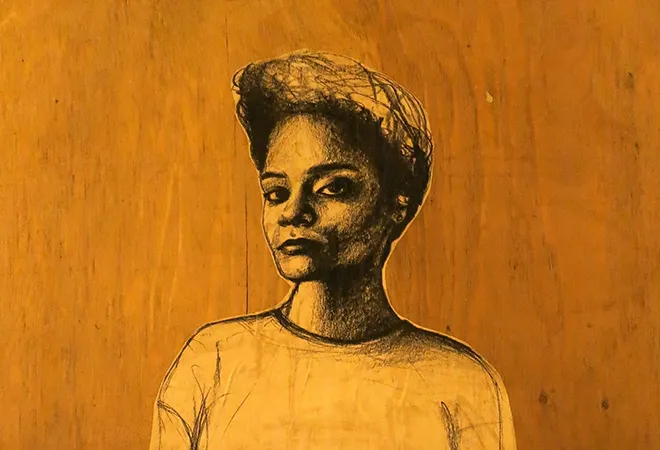 This article is part of the series — Catalysing Change: Women-led Development in the Decade of Action.
This article is part of the series — Catalysing Change: Women-led Development in the Decade of Action.
The COVID-19 pandemic led to the mass migration of people from the real to the virtual world as people turned to the internet to keep themselves connected and updated amidst social distancing measures and lockdowns. As much as the internet has been lauded for democratising access to information and has provided a platform for the ordinary person to voice their views, the digital space has also mirrored the issues and problems that plague the real world. Those marginalised in the real world are now facing marginalistion in the digital sphere as well. From financial fraud and bullying to an alarming rise in cyberattacks against health facilities, the pandemic has exposed the faultlines and the gaps in the mechanisms to protect people — particularly vulnerable sections of society — and institutions online. Women, in particular, have had to bear the brunt of patriarchal norms, misogyny and sexism spilling over from the real world to the virtual.
A case in point is the tweet posted by American music artist, Rihanna, in early February, where she addressed India’s ongoing farmers’ protests. Interestingly, Rihanna’s tweet did not take a stance on the issue. She simply wrote, “Why aren’t we talking about this?! #FarmersProtest.” The link she posted with it was of a CNN article whose headline was about the internet shutdown imposed around New Delhi, post clashes between protestors and police in late January. Whether she was sly tweeting against or directly taking on the Indian government is left to one’s own estimation. Even if we make the case that she did support the farmers’ protest, it does not justify the harassment she faced after her tweet went viral. A flood of abuse and vitriol poured into the reply section, with many raking up Rihanna being assaulted by her former boyfriend, Chris Brown, in 2009. This was not that different from the attention she received when the news of the domestic assault broke more than a decade ago on American media channels. Graphic images of a bruised and battered Rihanna did the rounds then as they did on Indian twitter this time around, as those outraged by her tweet descended into a character assassination intended to intimidate the singer.
Those marginalised in the real world are now facing marginalistion in the digital sphere as well.
Irrespective of your political leaning, if you are a woman, the response is more likely to be abusive if your engagement is on political issues. An ORF study of tweets on trending political topics in India found that women’s participation on political topics ranged between four percent to 12 percent, as opposed to men’s 33 percent to 55 percent, reflecting how India’s real-world exclusion of women in political discourse is mirrored online.
Women occupying — or attempting to occupy — public spaces have faced abuse, hatred and bile, especially those in traditionally male-dominated areas like politics. Amnesty International released a study on online abuse faced by women politicians in India, where 114,716 tweets mentioning 95 Indian women politicians were analysed in the three-month period leading up to, during, and shortly after the 2019 Lok Sabha elections. It was found that one in every seven tweets that mentioned women politicians in India was ‘problematic’ or ‘abusive’ while one in every five amongst these tweets was sexist or misogynistic.
Women occupying — or attempting to occupy — public spaces have faced abuse, hatred and bile, especially those in traditionally male-dominated areas like politics.
Amnesty International conducted a similar study with women politicians in the UK in the run up to the 2017 elections. The data collected revealed that abuse against women politicians cut across party lines, affecting women from all political parties. However, the abuse was particularly targeted towards those from minority and non-white communities. Jamaican-origin MP, Dianne Abbot, alone received almost half — 45.15 percent — of the abuse. Excluding Diane Abbot, Asian and Black women MPs received 35 percent more abusive tweets than their white counterparts. It comes as no surprise then that in 2019, 18 female MPs in the UK refused to seek re-election with many citing abuse, both online and offline, as one of the leading causes for their decision.
The ordinary woman is subjected to similarly horrific abuse online. A Pew Research Survey showed that women, particularly young women between the ages of 18-29, reported a high rate of sexualised harassment with more than half — 53 percent — having received explicit/graphic images they did not ask for.
What can be done?
First, social media platforms will need to be more proactive when it comes to their redressal mechanisms dealing with gendered abuse. For instance, a survey by Plan International found that 23 percent of women polled cited being trolled and attacked on Instagram; yet, Instagram’s reporting mechanisms do not list gendered abuse as one of the reasons you can report a profile on its platform. Subsuming abuse against women under the umbrella of “bullying or harassment” fails to address the fact that it is women who are facing the brunt of abuse on its platform and that the harassment they face is unique to their gender. A dedicated mechanism will go a long way towards making women feel safer online. Gender-based harassment should be valid reasons for conduct warnings, suspension and deplatforming.
Second, not only must there be dedicated policies for violence/abuse against women on social media platforms, they should also be available in local languages.
Third, abuse and misogyny in the age of the pandemic denies women their right to livelihood, considering how most workplaces and opportunities have moved online. Denying women a safe space on the internet results in closing women off from their right to work, which is a right that cannot be denied. To this end, laws specific to cybercrimes against women should be implemented in letter and spirit. Low conviction rates for cybercrimes discourage women from reporting online abuse. According to the National Crime Records Bureau, out of the 170 cybercrime cases filed in 2017, there was only one conviction. It must also be noted that there is no gender disaggregated data available for cybercrimes in India.
Denying women a safe space on the internet results in closing women off from their right to work, which is a right that cannot be denied.
Fourth, promote transparency in how content is monitored. A transparent policy on how a social media platform identifies, prevents, and removes content that is violent towards women will build women’s trust in the platform. Platforms can customise how it weeds out trolls from amongst its users. For instance, dating app Bumble’s VIBee feature is one that can only be accessed if you have not been reported and found guilty of violating the app’s policies.
Fifth, social media companies should develop case studies to show how they have applied their policies to protect women online and how these policies are implemented in practice.
Social media companies should take the lead in tackling gender-based abuse online and become champions to create safe spaces for women. Peer pressure is the single most effective tool for building successful platforms that encourage women’s participation without fear.
The views expressed above belong to the author(s). ORF research and analyses now available on Telegram! Click here to access our curated content — blogs, longforms and interviews.



 This article is part of the series —
This article is part of the series —  PREV
PREV


